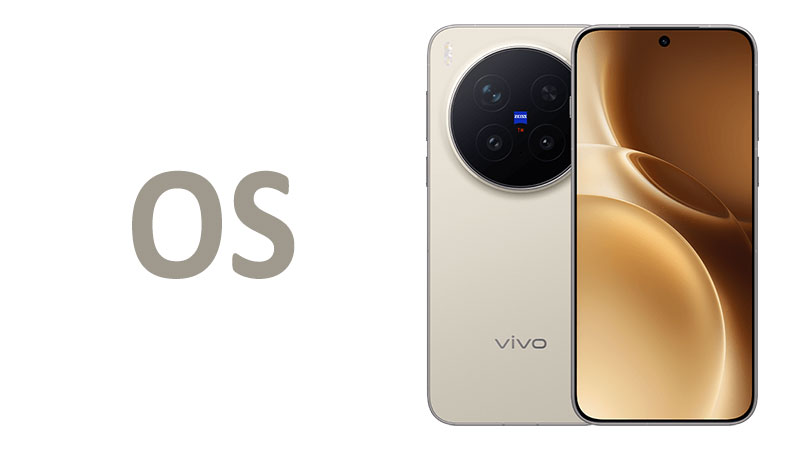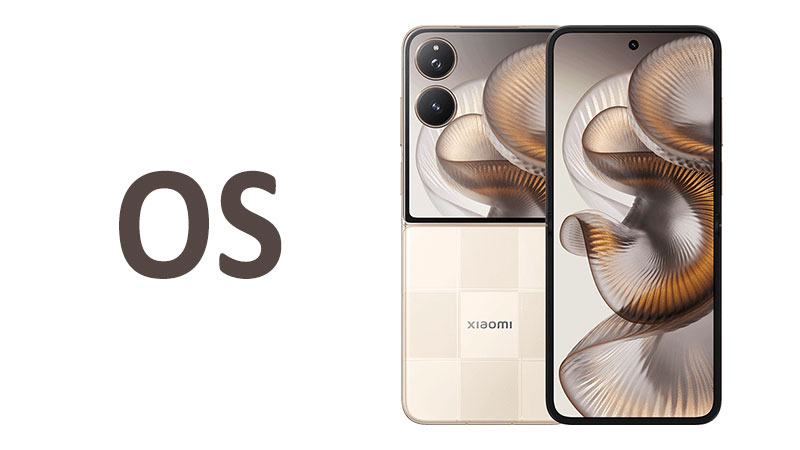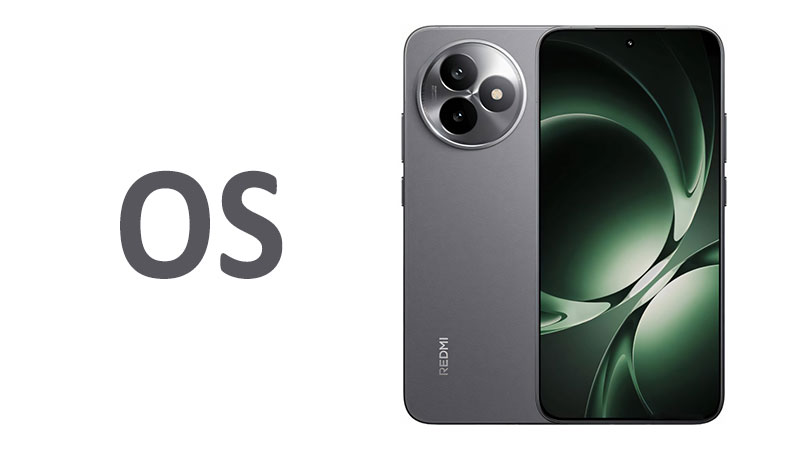The vivo X300 Pro OS review starts here, exploring the deeply customized Android 16 experience. This flagship phone introduces new software capabilities and refinements. We must examine the performance of both Funtouch 16 and OriginOS 6 closely. The operating system fundamentally dictates the user experience. Therefore, understanding these proprietary skins is essential for prospective buyers. This comprehensive article delves into every key software component. It also compares these features against previous iterations and main competitors.
The Foundation: Android 16 on the vivo X300 Pro
The vivo X300 Pro ships with the latest base operating system, Android 16. Google focuses on stability and deep integration of artificial intelligence with this release. Consequently, the core OS offers improved resource management. It also provides enhanced permission controls for user privacy. Vivo builds its custom skins directly on top of this stable foundation. This approach ensures compatibility with all modern Android applications and services. The phone’s powerful hardware receives optimized system calls from the kernel level. This results in smoother animations and faster app loading times.
The Four-Year Promise: Software Longevity
One of the most compelling reasons to choose the vivo X300 Pro is its upgrade commitment. Vivo promises an impressive policy of up to four major Android OS upgrades. This means users can expect support through Android 17, 18, 19, and possibly 20. Such long-term support is highly competitive in the premium Android market. Furthermore, monthly security patches will be delivered for five years. This extended lifespan greatly enhances the device’s value proposition. It ensures the phone remains secure and features the latest software for years to come. This commitment provides peace of mind for consumers investing in a flagship product. It contrasts favorably with the shorter support cycles of many rival brands.
Under the Hood: Performance and Optimization
Android 16 introduces several new APIs for system optimization. Vivo’s engineers leverage these to fine-tune the X300 Pro’s performance. The OS features better scheduling of background tasks. This minimizes unnecessary CPU and GPU drain. Consequently, sustained performance remains high during intensive gaming sessions. The memory management is also notably more efficient. This prevents aggressive killing of background applications. Users will experience faster app switching and seamless multitasking. This core efficiency is critical for a high-end device. The system ensures that the powerful chipset operates at peak efficiency for longer periods. This prevents thermal throttling from impacting daily use.
Funtouch OS 16: The Global Experience
Funtouch OS 16 is the interface layer designed for international markets. Its design philosophy balances customization with a clean, near-stock Android feel. This version represents a significant refinement over Funtouch 15. Vivo maintains its signature blend of colorful widgets and smooth navigation. However, it incorporates the strict design language of Material You more comprehensively. This creates a cohesive and visually pleasing user environment. The global appeal of Funtouch is its familiarity combined with unique vivo features. It successfully blends international software trends with proprietary enhancements.
Design and Aesthetics: Material You Meets Funtouch
The visual interface of Funtouch OS 16 is highly sophisticated. It fully supports Material You’s dynamic theming engine. The system automatically extracts colors from the user’s wallpaper. It then applies these colors across system menus and supported apps. In addition, Funtouch 16 introduces new proprietary icon packs. These icons feature refined geometry and vibrant color palettes. Furthermore, the Quick Settings panel receives a significant overhaul. It now offers clearer, more logically grouped controls. The use of subtle haptic feedback enhances interactions across the entire OS. Navigation gestures also feel incredibly polished and precise.
Specialized Comparison: Funtouch 16 vs. Competitors
Funtouch 16 offers a unique balance compared to rivals like Samsung’s One UI and Xiaomi’s HyperOS. One UI is often criticized for its feature bloat and complexity. HyperOS emphasizes lightweight performance and extensive customization. Funtouch 16 successfully strikes a middle ground. It provides many advanced features without overwhelming the user interface. Its animations feel slightly more fluid and responsive than its closest competitors. This provides a tangible advantage in day-to-day interactions. Compared to the previous Funtouch 15, the new version shows greater aesthetic maturity and consistency.
Privacy and Security Enhancements
Security is a primary focus for Android 16, and Funtouch 16 leverages all new protections. The OS includes an advanced permission monitoring system. It notifies the user whenever an application accesses sensitive data like the microphone or camera. Furthermore, a new secure vault feature protects private files and photos. This vault uses hardware-backed encryption. Vivo also introduces its proprietary anti-tracking measure. This feature limits how third-party apps can gather unique device identifiers. Consequently, user data remains safer and more private. The system includes a dedicated dashboard for managing all privacy-related settings easily. This transparency is a crucial modern feature.
Pros: Security Features
The granular control over app permissions is a major pro. Users can grant temporary, one-time access to location or media. The system also features an integrated security scanner. It checks applications for malicious behavior upon installation. This proactive security approach is highly commendable. Furthermore, the secure folder integration is seamless and fast. Users can quickly hide sensitive banking or personal apps.
Cons: Overly Aggressive Background Management
Despite performance improvements, some users might find the background management too strict. This could occasionally interrupt certain persistent apps. Consequently, users might need to manually whitelist specific applications. This small inconvenience protects overall battery life, however. Some third-party notification services occasionally fail to deliver timely alerts. Adjusting the battery optimization settings resolves this common issue.
Smart Features and AI Integration (Jovi/V-Assist)
Funtouch OS 16 significantly enhances the embedded AI assistant, often branded as Jovi or V-Assist globally. The AI engine is now integrated deeper into the system. It offers smarter, contextual suggestions based on user behavior. For instance, the assistant automatically suggests turning on dark mode in low-light environments. It also learns commuting patterns and proactively provides traffic alerts. This intelligent automation streamlines daily tasks. The new AI features require less processing power than previous iterations. This means the phone remains cool while providing advanced AI support.
Important Point: AI Capabilities
A key point for buyers is the AI’s dependence on regional servers. The full functionality of Jovi/V-Assist is best experienced in supported regions. International users still benefit from localized smart features. These include advanced photo organization and on-device translation tools. The AI-powered photo gallery excels at tagging and searching images instantly. This on-device processing preserves user privacy further.
Gaming and Performance Tools (Ultra Game Mode)
The vivo X300 Pro is a powerful gaming device. Funtouch 16 optimizes this experience through an upgraded Ultra Game Mode. This mode minimizes distractions during gameplay. It blocks notifications and restricts background network usage. Furthermore, the new version features frame interpolation technology. This ensures smoother, higher frame-rate performance in supported games. A new competitive mode optimizes touch response sensitivity. This gives players an edge in fast-paced action titles. The system provides real-time monitoring of temperature and frame rate. Gamers can adjust settings on the fly without exiting the game.
Specialized Comparison: Ultra Game Mode vs. Previous
The new Ultra Game Mode surpasses the one found in Funtouch 15. The older version offered basic optimization and distraction blocking. The current iteration includes hardware-level resource allocation controls. This allows the user to dedicate more processing power to a single game. This advanced tuning capability is a notable improvement. The new version also features an exclusive voice changer for in-game communication.
Pros and Cons of Funtouch OS 16
Pros:
- Excellent long-term software support (4 major upgrades).
- Fluid, responsive user interface and animations.
- Comprehensive customization with Material You integration.
- Strong focus on user privacy and security features.
- Dedicated, powerful Ultra Game Mode for mobile gaming.
- Simplified, clean design that is easy to navigate.
- Fully compliant with all essential Google Mobile Services.
Cons:
- Regional restrictions limit the full potential of V-Assist/Jovi.
- Pre-installed third-party applications (bloatware) still exist in some regions.
- The automatic background app management can be overly aggressive.
- The default icon grid spacing feels slightly cramped for some users.
OriginOS 6: The China-Centric Evolution
OriginOS 6 is the proprietary software skin used for the Chinese domestic market. This OS is fundamentally different from Funtouch OS 16. It represents a bold reimagining of the traditional mobile operating system interface. OriginOS prioritizes unique visual elements and micro-services. It offers a more dynamic and information-dense experience for the user. This approach caters to the highly customized app ecosystem prevalent in China. The philosophy behind OriginOS is to make information instantly accessible.
The Atomic Design Philosophy
OriginOS 6 continues to build upon its “Atomic Design” principle. This concept treats system functions and app information as discrete, interacting components. Users interact with “Atomic Widgets” directly on the home screen. These widgets are far more functional than standard app icons. For instance, a music widget might offer full playback controls and lyrics display without opening the main app. This streamlines interaction flow significantly. The new version refines the visual coherence of these elements further. The system ensures smooth transitions between different atomic components.
Deeper System Integration and Micro-Services
The depth of integration in OriginOS 6 is profound. It features an advanced micro-service architecture. This allows different applications to seamlessly share data and functionalities. For example, the calendar, weather, and traffic services are dynamically combined. They produce a real-time, context-aware morning report widget. This level of system cooperation is rare in other mobile operating systems. It makes daily information consumption effortless and efficient. Furthermore, the system includes deep integration with various third-party services. This creates a powerful, unified smart life ecosystem.
Specialized Comparison: OriginOS 6 vs. Global Funtouch 16
The primary difference lies in design philosophy. Funtouch 16 is an evolution of Android best practices. OriginOS 6 is a revolution, creating a unique user experience centered on functional widgets. OriginOS offers deeper, more specialized system tools. However, Funtouch 16 provides a more familiar experience for users outside China. Furthermore, the deep integration of Google services is absent in OriginOS. OriginOS prioritizes functionality over aesthetic simplicity compared to Funtouch.
Unique Widget and Interaction Model
The interaction model in OriginOS 6 focuses on efficiency and visual appeal. The “Huarong Grid” layout allows for highly customizable widget placement. Users can resize and arrange these dynamic tiles freely. The new “Behavioral Wallpapers” also react to the user’s steps or weather conditions. This adds a layer of personalization and interactivity not seen elsewhere. Learning the complex gestures and unique navigational pathways does take time, however. The system features a unique vertical app drawer style. It further separates the design from conventional Android skins.
Important Point: Learning Curve
A critical consideration for new users is the steep learning curve of OriginOS 6. While incredibly powerful, its unique design departs significantly from standard Android conventions. New users must invest time to master its specialized interactions. The reward is a highly personalized and efficient interface. This learning process is essential for unlocking the system’s full potential. Without proper configuration, the experience can feel overwhelming initially.
OriginOS Security Focus
OriginOS 6 includes the same Android 16 core security features as Funtouch 16. It adds several China-specific security layers, however. These focus on protecting user data within the domestic app ecosystem. For instance, a dedicated firewall manages network access for specific apps. This ensures that sensitive information does not leave the device without explicit permission. The OS also provides robust authentication mechanisms. Facial recognition and in-display fingerprint scanning are flawlessly integrated. The system also offers advanced notification privacy controls.
Pros and Cons of the Split OS Strategy
The decision by vivo to maintain two distinct operating systems is a strategic one. It allows for the hyper-localization of services and features. The China market demands features and security specific to its regulations and app stores. The global market, conversely, requires adherence to Google’s service standards and familiar aesthetics. This dual approach maximizes market penetration and consumer satisfaction in different regions.
Pros of Dual OS:
- Optimized for regional app ecosystems and user habits.
- Allows Funtouch to remain clean and Google-compliant globally.
- OriginOS pushes experimental design boundaries.
- Both systems benefit from the common, secure Android 16 kernel.
- Consumers in each market receive a tailored software product.
Cons of Dual OS:
- It increases development and maintenance costs for vivo.
- Global users cannot experience the full, radical OriginOS features.
- Consistency across the brand is reduced, which confuses some users.
- Importing devices results in missing essential regional services.
Key Buyer Considerations and User Experience
The choice of the vivo X300 Pro comes with an excellent software promise. However, the buyer needs to consider several key software integration points. The overall performance is determined by how well the OS manages the phone’s powerful camera and battery resources. The user’s location fundamentally determines the software experience. Software optimization is the final factor distinguishing a good phone from a great one.
Choosing Your Ecosystem: Global vs. China
Buyers outside of mainland China will receive the Funtouch OS 16 version. This version comes pre-loaded with the Google Play Store and related services. Conversely, devices imported from China will run OriginOS 6. These devices lack native Google service support. Furthermore, manual installation of Google services can be complex and sometimes unstable. Therefore, international buyers must confirm they purchase the global Funtouch version. Importing a device is not recommended for users relying on Google apps.
Battery and Resource Management
Both Funtouch 16 and OriginOS 6 incorporate advanced battery-saving techniques. Android 16 improves the Doze mode and background restrictions significantly. Vivo enhances this with its proprietary “Super Power Saver” mode. This mode cleverly throttles non-essential services when the battery is critically low. Consequently, the X300 Pro offers impressive standby time. Its adaptive charging feature also extends the battery’s overall lifespan. It learns the user’s charging habits and slows the charge rate near 100%. This technology minimizes battery degradation over years of use.
Camera Software Integration
Vivo is known for its computational photography prowess. The OS plays a crucial role in delivering these results. Both Funtouch 16 and OriginOS 6 feature deep integration with the camera hardware. The custom software algorithms process image data from the massive sensors quickly. New AI algorithms enhance low-light performance and portrait mode effects. The camera app interface in Funtouch 16 is intuitive and easy to navigate. It offers professional manual controls readily accessible to enthusiasts. The software pipeline is optimized for zero-shutter-lag performance. This ensures users capture perfect, instantaneous shots every time.
Important Points a Buyer Should Know
- Long-term commitment: The four years of OS updates is a massive factor. This justifies the premium price tag for longevity. This commitment exceeds what many competitors offer today.
- Regional split: Understand the major differences between Funtouch 16 and OriginOS 6. The difference is more than cosmetic. This is crucial for app compatibility and service access.
- AI acceleration: The phone’s processor includes a dedicated neural processing unit. The OS fully utilizes this hardware for AI features. This leads to faster image processing and translation. AI is integral to features like smart battery management.
- Customization: Both skins offer extensive options. However, OriginOS is superior for deep visual and interactive customization. Funtouch excels in adhering to familiar Android norms. Choose based on your preference for novelty versus familiarity.
- Hardware synergy: The software is specifically tailored to the X300 Pro’s display and camera array. This results in superior color calibration and refresh rate control. The software makes the hardware shine.
- Haptic feedback: Funtouch 16 offers highly refined haptics. System navigation feels crisp and responsive. This attention to detail elevates the daily user experience considerably.
- Multitasking tools: Both skins feature robust split-screen and floating window support. Managing multiple applications simultaneously is intuitive and lag-free. Productivity users will appreciate this fluidity.
- Accessibility: Android 16 features are fully supported. Funtouch 16 adds specialized accessibility modes. These enhance usability for individuals with visual or motor impairments. This demonstrates a commitment to inclusive design.
- System integrity: The core Android 16 kernel ensures rock-solid stability. Crashes and freezes are exceptionally rare. This dependability is a hallmark of a true flagship experience.
- Ecosystem integration: Funtouch 16 includes features for quick pairing with vivo accessories. Headphones and smartwatches connect instantly upon proximity. This seamless integration enhances the brand ecosystem.
Conclusion
The vivo X300 Pro OS story is one of dual optimization and powerful longevity. The foundation of Android 16 provides necessary performance and security enhancements. Vivo successfully layers its distinct identities on top of this base. Funtouch OS 16 delivers a polished, responsive, and globally familiar user experience. It offers a clean aesthetic combined with strong gaming features. Conversely, OriginOS 6 provides a radical, feature-rich, and deeply integrated domestic experience. The commitment to four major Android upgrades assures customers of future-proofing. Buyers receive an advanced, stable, and highly capable software package. The X300 Pro’s software is arguably as impressive as its hardware specifications. We conclude the OS is a powerful selling point.
FAQ
- Does the vivo X300 Pro receive four years of Android updates? Yes, vivo commits to providing up to four major Android OS upgrades for the X300 Pro.
- What is the difference between Funtouch 16 and OriginOS 6? Funtouch 16 is the global OS with Google services and a traditional Android look. OriginOS 6 is the China OS with unique design and micro-services.
- Will the global version of the phone have Google Play Store? Yes, the international variant of the vivo X300 Pro running Funtouch 16 includes the full suite of Google services.
- Is the Ultra Game Mode in Funtouch 16 a significant upgrade? Yes, the new Ultra Game Mode includes deeper hardware resource control and frame interpolation technology for smoother gameplay.
- Does the X300 Pro software use a lot of pre-installed apps? The Funtouch 16 global version has minimal bloatware, but the OriginOS 6 version contains many China-specific pre-loaded applications.



